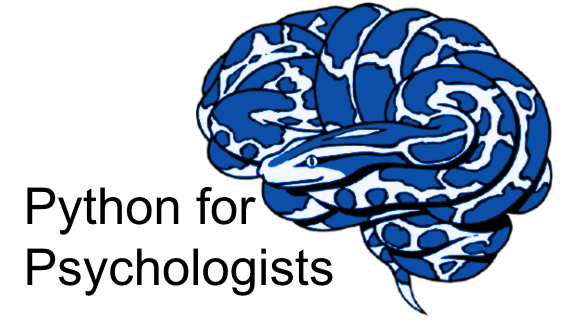Experiments I (alternate timeline)
Contents
Experiments I (alternate timeline)¶
Last week’s session that rather was a disaster…specifically the parts where we tried to code our experiment. The problem was situated in the installation of the required computing environment and for the windows OS folks, the interaction of the tools we tried to use: WSL, conda and vscode. TL;DR: basically nothing really worked and we couldn’t try out pyschopy. However, to still showcase tiny bits and provide some insights, we will travel back in time and create an alternate/branched timeline for the Experiments part of the course. In short, we will use PsychoPy’s standalone version rather than using the tools we’ve explored so far in order to allow everyone interested to participate.
Topics 💡👨🏻🏫¶
In the following you’ll find the objectives and materials for each of the topics we’ll discuss during this session.
Introduction to PsychoPy - I - alternate timeline¶
As mentioned above, this content is situated in the alternate timeline of the Experiments parts of the course. To get some idea of how to run experiments via python, we will explore the python library PsychoPy via its standalone version. This will include its setup, basic working principles, as well as advantages and disadvantages, showcased on a very simple experiment.
Objectives 📍¶
running
experimentsusingpythonExploring
PsychoPybasic setup & interaction
experiments, trials, stimuli, responses
a very simple experiment
Ask and answer questions
Have a great time
Materials 📓¶
You can find the slides here:
Please also consult the jupyter notebook which contains a condensed version of the python code written without the builder interface: Experimentation I - Introduction to PsychoPy I .
tasks for subsequent meeting 🖥️✍🏽📖¶
There will be three subparts within this assignment:
populate the readme.md file via VScode
so far we didn’t add any documentation on what our experiment is about and how to run it
please open the readme.md file PsychoPy created in VScode and provide some basic information about it and how people can run it
add the remaining lists of stimuli to the experiment: snacks and animals
copy/adapt the steps we did for the movies (create routine, add components to routine, create csv file with stimuli, etc.)
follow the respective steps and only adapt what’s necessary (question, explanation, stimuli list/file)
take part in the experiment and provide honest answers/responses
conduct the experiment as a naive participant with a “funny ID” (please keep it civil)
Once you finished all three parts, please compress the psychop_experiment folder (e.g. via right click on the folder -> compress/zip/etc. or the terminal) and send it to Peer.
Deadline: 26/01/2022, 11:59 PM EST
optional/reading/further materials¶
Here are some cool videos providing some further insights into the world and capabilities of PsychoPy.
First, a nice introduction to everything PsychoPy from the standalone/builder perspective.
And a nice tutorial on how to implement the Simon Task in PsychoPy.
